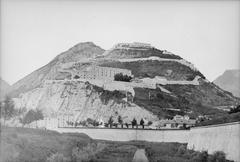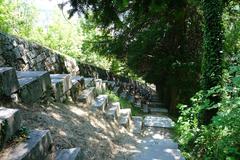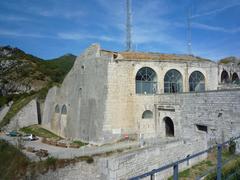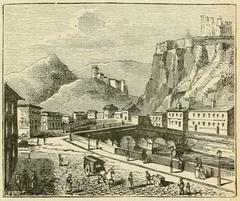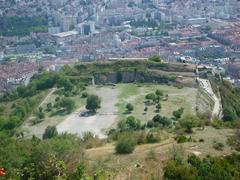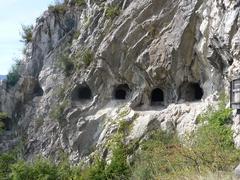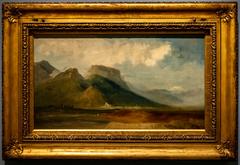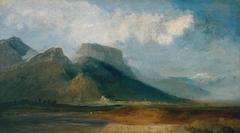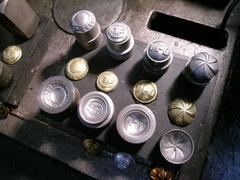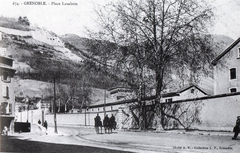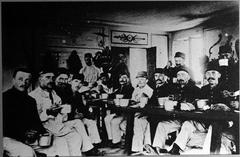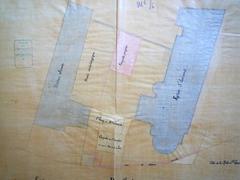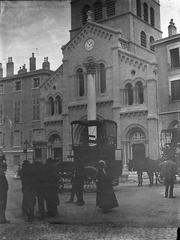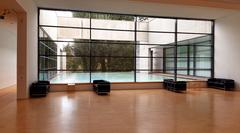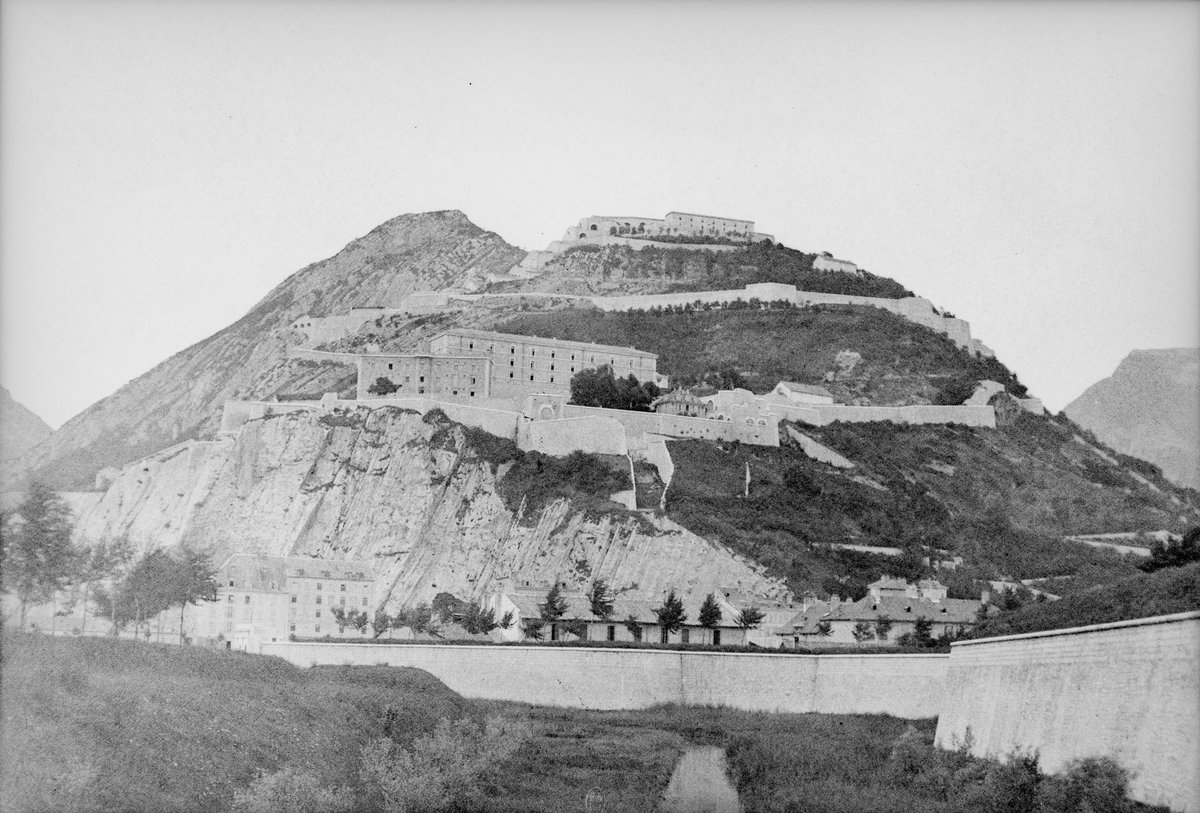
Bastille Grenoble Visiting Hours, Tickets, and Historical Site Guide
Date: 15/06/2025
Introduction
Perched atop the southern tip of the Chartreuse mountain range, the Bastille of Grenoble is a historic fortress that commands sweeping views over the city and the majestic French Alps. Rising 476 meters above sea level, this iconic site is both an architectural marvel and a symbol of Grenoble’s rich cultural heritage and military history. Originally constructed in the 16th century by the Duke of Lesdiguières to protect the city from invasions, particularly from the Duchy of Savoy, the Bastille has evolved into a vibrant destination blending history, culture, and outdoor adventure (Wikipedia, Grenoble Tourisme).
Today, the Bastille offers more than just stunning panoramas of the Isère valley and surrounding mountains. It features well-preserved 19th-century fortifications, subterranean passages like the Mandrin Caves, museums, art centers, and a variety of outdoor activities. The site is easily accessible year-round by the renowned Grenoble-Bastille cable car—affectionately called “Les Bulles” (The Bubbles)—as well as by hiking and biking trails (Wikiwand, That Adventurer).
This comprehensive guide provides practical information about visiting hours, ticket options, accessibility, on-site attractions, and nearby points of interest, ensuring an enriching and memorable visit to one of Grenoble’s most treasured landmarks (Grenoble Tourisme, Tripomatic).
Table of Contents
- Introduction
- History and Strategic Importance
- Architectural Highlights
- Visiting the Bastille: Practical Information
- Key Attractions and Activities
- Nearby Attractions
- Visitor Tips
- Frequently Asked Questions (FAQ)
- Summary and Final Recommendations
- References
History and Strategic Importance
The Bastille’s commanding position at 476 meters elevation made it a natural defensive stronghold. First fortified in the 16th century under the Duke of Lesdiguières, the Bastille was designed to protect Grenoble from regional threats, notably from the Duchy of Savoy (Wikipedia, Grenoble Tourisme). While it never witnessed large-scale battles, its presence served as a deterrent.
In the 19th century, following the defeat of Napoleon and shifting borders, General Haxo modernized the fortress between 1824 and 1847 to withstand contemporary artillery, with new ramparts, casemates, and tunnels (Wikiwand). Yet, rapid advances in military technology soon rendered the site obsolete as a defensive structure.
Beyond its military function, the Bastille became a symbol of local resistance and pride—especially during the French Revolution and World War II, when Grenoble played a key role in national events (Nos Alpes).
Architectural Highlights
Much of the Bastille’s current appearance stems from 19th-century renovations. The fortress features thick ramparts, cannon emplacements, underground passages, and the famous Mandrin Caves. Its layout was designed to withstand attacks from the surrounding mountains rather than from within the city.
The site’s scale and preservation make it a singular example of mountain fortification, and its setting allows for exceptional views across Grenoble and the Alps (That Adventurer).
Visiting the Bastille: Practical Information
Visiting Hours
- Bastille Fortress: Open year-round. General hours are 9:00 AM to 7:00 PM, with extended hours in summer. Confirm seasonal updates on the official website.
- Cable Car (“Les Bulles”): Operates daily, typically from 9:15 AM to 7:00 or 8:00 PM in summer. Extended hours may apply during holidays or special events (bastille-grenoble.fr).
Tickets and Entry
- Fortress Grounds: Free entry.
- Cable Car: Round-trip tickets are approximately €8–€10 for adults, with discounts for children, students, and seniors. Tickets can be bought at the lower station or online (Grenoble Tourisme, Grenoble Pass).
- Museums and Guided Tours: Entry to the Musée des Troupes de Montagne and other special exhibitions may require separate tickets (€5–€10).
- Combined Packages: Some packages combine cable car rides with guided tours or museum visits.
Getting There
- Cable Car: The lower station is at Quai Stéphane Jay, next to the Jardin de Ville in central Grenoble. The five-minute ascent offers spectacular city and mountain views.
- Hiking Trails: Multiple footpaths, including the Montée Chalemont and the trail from Jardin des Dauphins, take 30–45 minutes and provide scenic access.
- Public Transport: The nearest tram stop is “Hubert Dubedout - Maison du Tourisme” (Lines A and B). Bus routes and bike rentals (Métrovélo, Dott) are also available (Grenoble Public Transport).
- Car: Parking is limited near the base; private vehicles cannot access the summit.
Accessibility
- Cable Car: Wheelchair accessible.
- Fortress: Many areas have been adapted for reduced mobility, though some historical sections remain challenging due to stairs and uneven ground (Wikiwand).
On-Site Facilities
- Dining: Two restaurants at the summit—Chez le Pèr’Gras (traditional cuisine) and Restaurant O2 Téléphérique (casual dining with terrace). Reservations may include cable car ticket discounts (PlanetWare).
- Restrooms, gift shop, and picnic areas are available.
- Guided Tours: Seasonal, in French and English. Check the official website for schedules.
Key Attractions and Activities
Bastille Fortress and Ramparts
Explore the fortress’s ramparts, bastions, and tunnels. Numerous terraces offer 360° views of the city, Isère and Drac rivers, and the Chartreuse, Vercors, and Belledonne ranges (thetouristchecklist.com).
Museums
- Musée des Troupes de Montagne: Dedicated to France’s elite mountain infantry, with displays on equipment, history, and regional significance (try-travel.com).
- Dauphinois Museum: Housed in a former convent, featuring traditions and archaeology of the Dauphiné region (francevoyager.com).
Outdoor Activities
- Hiking and Trail Running: Well-marked paths from the city and within the site.
- Via Ferrata: A secured climbing route, suitable for all levels (bastille-grenoble.fr).
- Acrobastille Parc de Loisirs: Adventure courses, ziplining, and rappelling for families and thrill-seekers (PlanetWare).
Cultural Events
- Regular festivals, open-air concerts, fireworks (especially on Bastille Day), and art exhibitions. Annual events include the Fête de la Musique and historical reenactments (Over Your Place).
Nearby Attractions
- Jardin des Dauphins: Grenoble’s largest park with Mediterranean flora and scenic terraces.
- Vieille Ville (Old Town): Historic pedestrian streets, museums, cathedrals, and markets (PlanetWare).
- Musée de Grenoble: Major art collections and sculpture park.
- Place de Gordes and Jardin de Ville: Elegant squares and the cable car’s starting point.
- Le Magasin – CNAC: Contemporary art center.
- Domaine de Vizille: A château and museum linked to the French Revolution, 20 km from Grenoble.
Visitor Tips
- Best Time to Visit: Clear days for panoramic views, especially early morning or late afternoon for fewer crowds and stunning light.
- Tickets: Purchase cable car tickets online during peak times to avoid queues.
- Weather: Even in summer, bring a jacket; it’s cooler and windier at the summit.
- Sustainability: Use public transport or eco-friendly options like bikes.
- Family-Friendly: The cable car, playground, and Acrobastille make it suitable for all ages.
- Photography: The Bastille is a prime spot for sunrise/sunset shots; don’t forget your camera.
Frequently Asked Questions (FAQ)
Q: What are the Bastille Grenoble visiting hours?
A: The Bastille is usually open from 9:00 AM to 7:00 PM, with extended summer hours. The cable car typically operates 9:15 AM–7:00 or 8:00 PM. Always confirm on the official website.
Q: Is entry to the Bastille free?
A: Yes, the fortress grounds are free to enter. Tickets are needed for the cable car, museums, and some guided tours.
Q: How do I get to the Bastille?
A: By cable car from the city center, or via scenic hiking trails starting near Jardin de Ville or Jardin des Dauphins.
Q: Is the site accessible to people with limited mobility?
A: The cable car and main areas are accessible, but some historic sections may pose challenges due to stairs and uneven ground.
Q: Are guided tours available?
A: Yes, in French and English during peak seasons. Check availability on the official website.
Q: What family activities are available?
A: The Acrobastille adventure park, playground, and interactive museum exhibits make the Bastille suitable for families.
Summary and Final Recommendations
A visit to the Bastille in Grenoble promises a unique blend of history, culture, and spectacular natural beauty. This remarkable site, with its centuries-old fortifications, cable car ascent, panoramic viewpoints, and cultural attractions, is accessible and engaging for visitors of all ages (Wikipedia, Wikiwand). Plan your visit by checking current opening hours and ticket options, consider joining a guided tour for deeper insights, and explore adjacent attractions like the Musée de Grenoble and the historic Old Town (Tripomatic, francevoyager.com).
For up-to-date information, download the Audiala app and follow official channels for news on special events, exhibitions, and seasonal activities. Experience first-hand why the Bastille is one of France’s most emblematic historical sites (Grenoble Tourisme).
References
- Bastille (Grenoble), 2025, Wikipedia (Wikipedia)
- Visiting the Bastille of Grenoble: History, Tickets, and Exploring Grenoble’s Historical Sites, 2025, Grenoble Tourisme (Grenoble Tourisme)
- La Bastille de Grenoble : le fort d’une ville de frontière, 2025, Nos Alpes (Nos Alpes)
- Bastille (Grenoble), 2025, Wikiwand (Wikiwand)
- How to Visit the Bastille in Grenoble: Tickets, Hours, History, and Transportation Guide, 2025, Bastille Grenoble Official Site (bastille-grenoble.fr)
- Visiting the Bastille Grenoble: Hours, Tickets, and Top Attractions, 2025, France Voyager (francevoyager.com)
- Practical Information and Nearby Attractions, 2025, Tripomatic (Tripomatic)
- Exploring Grenoble Cultures, Traditions & Celebrations, 2025, Over Your Place (Over Your Place)
- Things to Do in Grenoble, 2025, The Tourist Checklist (thetouristchecklist.com)
- Grenoble Public Transport, 2025, Grenoble Tourisme (Grenoble Tourisme)
- Grenoble Pass and Transportation Info, 2025, Grenoble Pass (Grenoble Pass)
